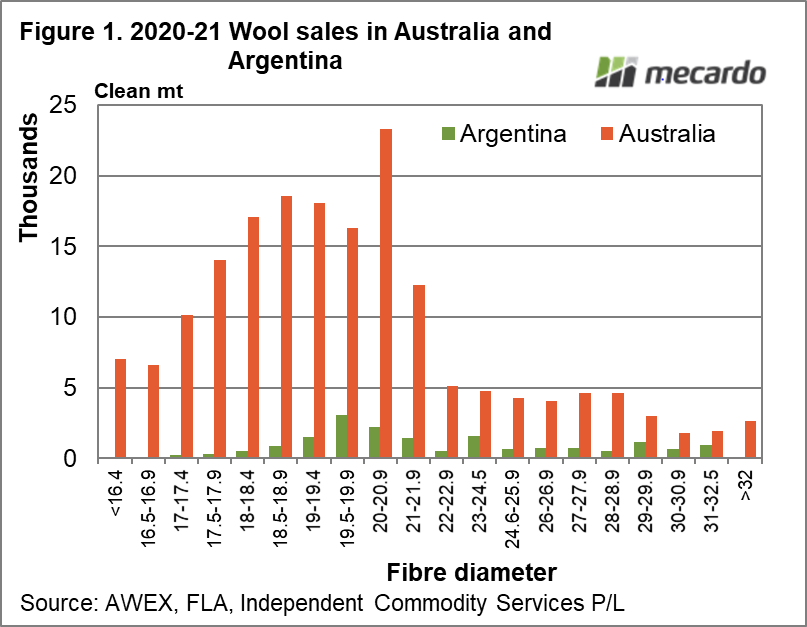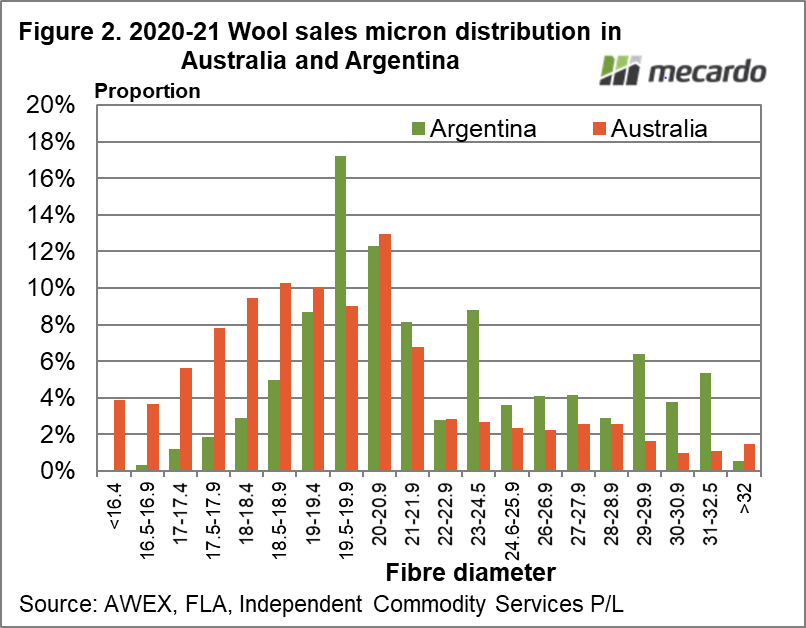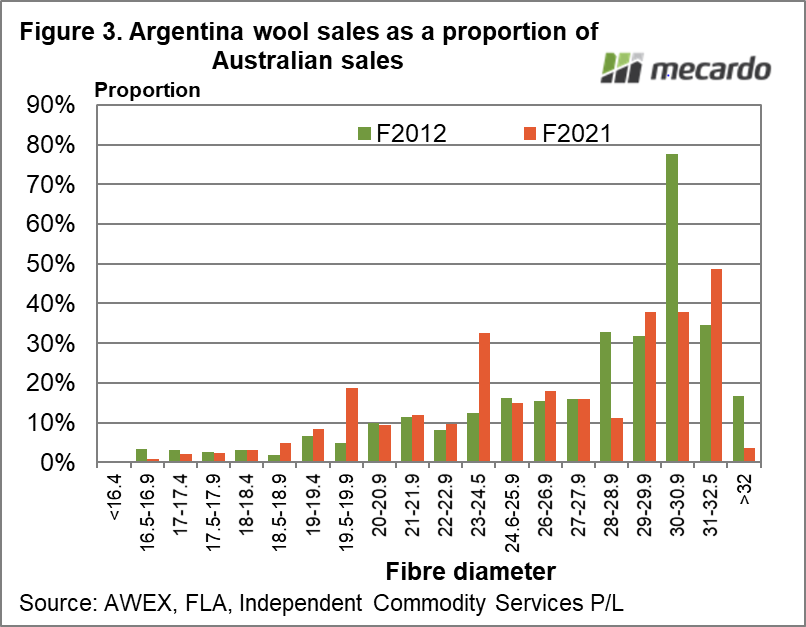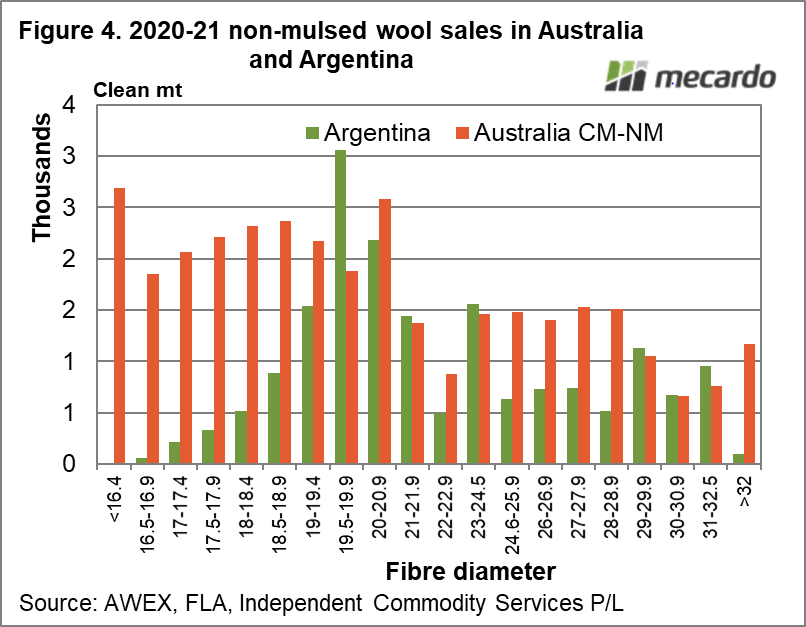Following on from last week’s article which looked at the South African Merino clip in some detail and compared it to the Australian Merino clip. This article takes a look at the Argentine wool clip (all breeds).
One of the tricks to using a search engine such as Google, when looking for statistics in a non-English speaking country, is to search in the native language of the information being sought. In the case of wool statistics for Argentine, search in Spanish for the Federacion Lanera Argentina (FLA) and up comes “https://www.flasite.com/index.php/es/” which provides some excellent data on the Argentine clip, with the detail captured mainly at the export stage. The FLA data includes greasy, scoured, tops and noil in the export numbers, from all breeds.
Mecardo last looked at the Argentine wool clip early in 2020, showing how the Argentine sheep flock had trended lower in recent decades like the Australian flock.
Figure 1 compares the Australian and Argentine volumes in clean terms along the fibre diameter breakup used by the FLA. Note that under 20 micron the increments are in half microns. For wool broader than 20 micron the increments increase to whole microns, hence the unusual feature of the 20-20.9 micron volume being the largest category in the schematic. In total the Argentine clip is about 10% of the size of the Australian clip.
Figure 2 compares the micron distribution of Australian auction wool sales (which account for about 85% of Australian production) and Argentine exports (all wool/all breeds). The Argentine distribution is concentrated around the 19.5-21 micron categories, and has a bigger crossbred/comeback “tail” than Australia.
In Figure 3 Argentine volume by micron is expressed as a proportion of the Australian clip. In volume terms Argentine wool is immaterial under 19 micron. From 19 micron and broader it picks up in proportion, around 10% for 19 to 24 micron, and then up to 30-40% for 29 to 32 micron.
Finally Figure 4 compares the Argentine clip (all unmulesed) with the CM-NM declared wool sold at auction last season by micron category. As for South Africa, in non-mulesed terms the Argentine clip holds its own for non-mulesed wool especially in the broader 19 through 22 micron categories which equates to the broader merino supply in Australia.
What does it mean?
When discussing the supply of non-mulesed broader Merino wool (broader than 19 micron) wool the other major southern hemisphere wool exporters are on par with the Australian supply, an unusual position for Australian merino production. Changes in the production or availability of wool from these regions will have a material impact on the non-mulesed market.
Have any questions or comments?
Key Points
- Like South Africa, Argentine wool production when viewed through the filter of non-mulesed is significant with regards to the broader Merino production in Australia.
- Sub-19 micron wool production in Argentina is very limited.
- At the other end of the micron range, Argentine production for 29-32 micron is substantial in relation to Australian production (40-50%).
Click on figure to expand
Click on figure to expand
Click on figure to expand
Data sources: AWEX, FLA, ICS, Mecardo
















